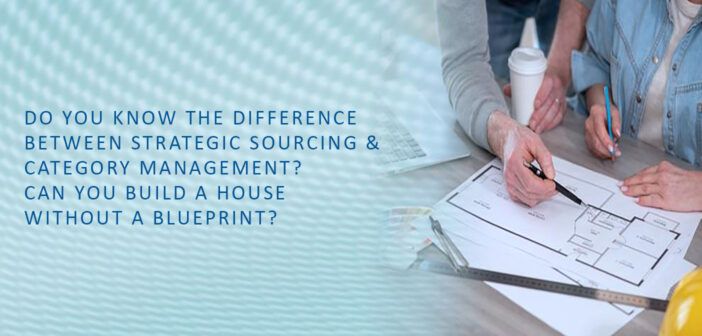As Strategic Sourcing professionals we are constantly gathering data, analyzing it, drawing conclusions and making recommendations. It’s actually a key component of our role as an internal consultant. But are we utilizing a disciplined process that help to ensure that the data we are gathering is relevant so that we don’t get lost in data overload? I work with a lot of teams on Strategic Sourcing and Category Management initiatives and an overwhelming number of those teams move right to data gathering without doing the proper planning. This leads to significant inefficiencies not to mention EXTREME frustration. I like to compare this phenomenon to a builder trying to build a house without a blueprint – it is insanity. So, how do you get prepared for data gathering?
Let’s start with – what is data? When most of us think about data, we envision massive amounts of information that we are getting from some type of system, but data can be:
- a comment from an interview
- a purchase order line item
- a general ledger entry
- a proposal from a supplier
- a response to a survey
- a strategic plan
- a process map
- results from internet research
- an observation from a site visit
But before you rush to gather your data, you need to do some planning. First, you need to define your objective – what are you trying to accomplish. You may be trying to solve a problem OR take advantage of an opportunity but either way, you need to define it. Next, you develop several hypotheses – these are potential solutions that will help you meet your objective. Your hypotheses can be something you know will work or is simply a possibility. After you develop your hypotheses you need to test them with a set of key questions. Your key questions will help you to be able to either defend, reject or modify your hypotheses once you answer them. How will you answer your key questions? By gathering data AND this is your required data and the ONLY data you should be gathering for 100% data gathering efficiency.
In order to obtain your required data you need to make a few choices – where am I going to get the data (the data source) and how am I going to get the data (the data gathering method). Her are the three different types of data gathering methods:
By the way, the data gathering method will be driven by the source of the data which can be either internal or external. Your key questions are the most critical element of the data gathering process because they help to guide and organize your data gathering efforts – they are the blueprint.
Imagine going to the internet and asking for a list of Engineering Services suppliers. The good news is that the internet is a great source for research and has billions / trillions of pieces of data but billions of pieces of data is a nightmare (that’s the bad news). Making sure the data you are gathering is answering a specific key question will increase your data gathering efficiency tenfold (actually one-million fold 😊). Now ask for a list of Engineering suppliers that focus on Project Management, in the Utility industry in St. Louis, Missouri and you get very different results. Let me use another Sourcing Example – an RFP is a data gathering tool (document review) and the questions you ask a supplier should come directly from your key questions, which will help you to defend, reject or modify your hypotheses which will help you meet you Objective. This all comes from the Consulting process” AKA the scientific method or the problem-solving process.
So, the next time you are tempted to go gather data without going this structured process, think about the contractor that is trying to build a house without a blueprint.
Let us know what you think and join in the conversation . . . . . . .


